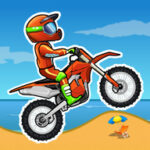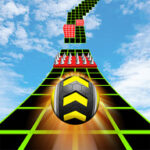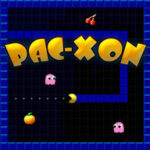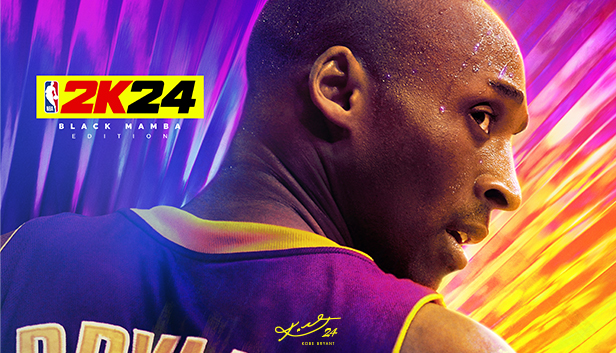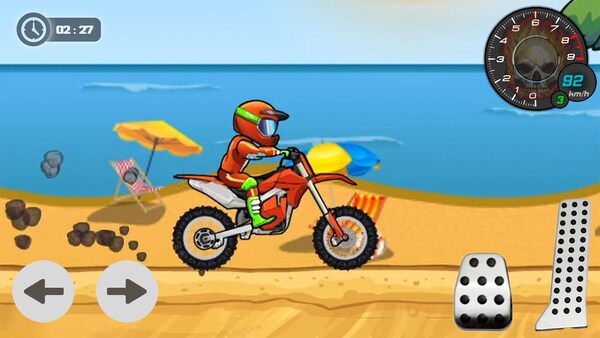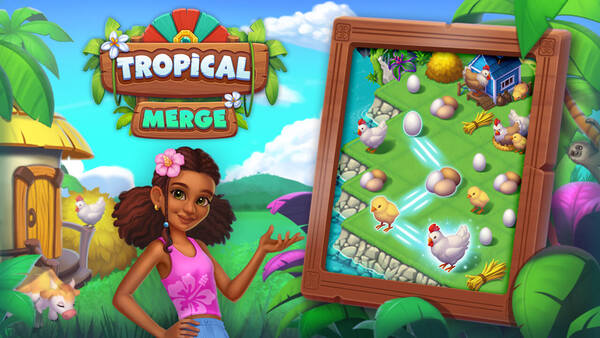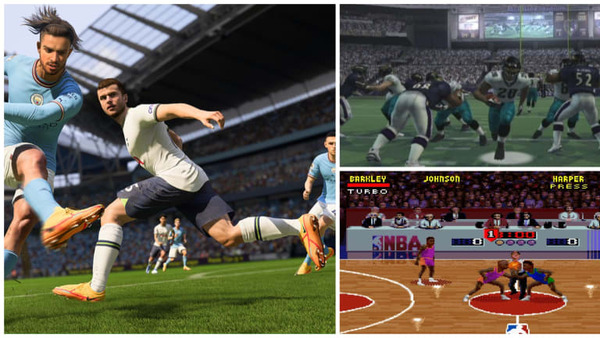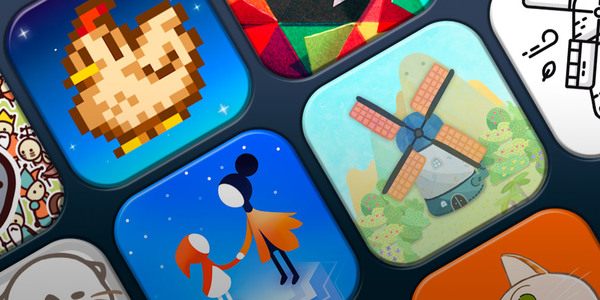Minecraft – A Timeless Sandbox That Redefined Gaming
In an age where hyper-realistic graphics, cinematic cutscenes, and billion-dollar development budgets dominate the gaming landscape, one game continues to stand tall, blocky, and virtually limitless: Minecraft. Since its official release in 2011 (and its alpha launch in 2009), Minecraft has become more than just a game—it’s a platform for creativity, education, survival, collaboration, and storytelling.
With over 300 million copies sold worldwide and billions of hours played, Minecraft is not only the best-selling video game of all time, but also one of the most culturally influential. Its simple graphics mask an unparalleled depth of gameplay, from solo survival experiences to massive multiplayer adventures, educational tools, and even scientific simulations.
In this expert guide, we’ll explore Minecraft’s journey, its evolution, gameplay mechanics, community, educational value, and more.
The Origins of Minecraft: From Indie Project to Global Phenomenon
The Creation by Markus “Notch” Persson
Minecraft was originally created by Swedish developer Markus Persson, better known as “Notch”, in 2009. Inspired by games like Infiniminer, Dwarf Fortress, and RollerCoaster Tycoon, he built Minecraft using Java as an independent project with a basic premise: place and break blocks in an infinite procedurally generated world.
Early Access and Community Growth
Even in its alpha and beta stages, Minecraft attracted a passionate community that fueled its development. The game’s openness, modding support, and creativity-focused gameplay led to massive grassroots promotion via forums, YouTube, and livestreams. Mojang, the studio formed around Minecraft, officially released the game in November 2011.
Survival Mode: The Core of Minecraft’s Gameplay Loop
Resource Gathering and Crafting
At its core, Minecraft’s Survival Mode tasks players with surviving in a hostile world:
-
Punch trees to gather wood
-
Mine resources like coal, iron, and diamonds
-
Craft tools, weapons, and shelter
-
Fend off enemies like zombies and skeletons
This loop of gathering, crafting, building, and surviving is deeply rewarding and highly customizable.
Health, Hunger, and Danger
Players must manage:
-
Health (hearts)
-
Hunger (affects health regeneration)
-
Armor & weapons (for protection and combat)
-
Nightfall (when dangerous mobs spawn)
Survival mode combines risk, reward, and exploration in a uniquely meditative yet intense experience.
Creative Mode: A Blank Canvas for Builders
Infinite Blocks, No Threats
In Creative Mode, players have:
-
Unlimited resources
-
No health or hunger
-
Flight and instant breaking of blocks
This mode is ideal for:
-
Architects designing mega structures
-
Kids exploring basic construction
-
Artists recreating real-life landmarks
Famous Creative Builds
Players have constructed:
-
Full-scale replicas of Middle-Earth
-
Functioning 8-bit computers
-
Replicas of Notre Dame, USS Enterprise, and more
Creative mode is Minecraft's answer to digital LEGO on an infinite canvas.
Redstone and Automation: Minecraft’s Built-In Engineering System
Introduction to Redstone
Redstone is Minecraft’s version of electrical wiring. Players can use it to:
-
Open doors and gates
-
Build hidden passages
-
Create light sensors and alarms
Advanced Redstone Mechanics
More advanced users build:
-
Farming machines
-
Item sorters
-
Automatic smelters
-
Even logic gates and functioning CPUs
This aspect of Minecraft appeals to engineering minds and provides a real-world understanding of logic circuits and systems thinking.
Multiplayer Servers and Community Creations
Online Servers: Public and Private Worlds
Players can join:
-
Survival multiplayer (SMP) servers
-
Minigame servers (Bed Wars, Skyblock, Hunger Games)
-
Roleplay servers
-
Anarchy servers with no rules
These servers often include mods, plugins, and economies, forming thriving online communities.
Real-World Impact
Some servers attract millions of players and form tight-knit digital societies. Notable servers include:
-
Hypixel – Largest Minecraft server with custom games
-
HermitCraft – A private SMP with content creators
-
2b2t – An infamous anarchy server known for its history
The Nether and The End: Exploring Other Dimensions
The Nether: A Hellish Challenge
Accessed through a Nether Portal, the Nether is a:
-
Dangerous world with lava, fortresses, and unique mobs
-
Source of important items like blaze rods and netherite
The End and the Ender Dragon
Players can ultimately reach The End by:
-
Finding a stronghold
-
Activating the End Portal
-
Fighting the Ender Dragon, Minecraft’s final boss
Beating the dragon provides end credits, but for many, it's just the beginning of post-game goals.
Education Edition and Minecraft in the Classroom
What Is Minecraft: Education Edition?
Minecraft: Education Edition is a classroom-focused version used in over 115 countries. It includes tools for:
-
Collaborative projects
-
Chemistry simulations
-
Coding with Code Builder
-
Social-emotional learning scenarios
Benefits in Education
Minecraft teaches:
-
Problem-solving
-
Creativity
-
Teamwork
-
STEM skills
It’s a hands-on platform that transforms learning from passive to participatory.
Mods, Texture Packs, and the Marketplace
Modding Community
The PC (Java) version supports extensive mods. Popular ones include:
-
OptiFine (graphics performance)
-
Biomes O' Plenty (adds new terrain)
-
Tinkers' Construct (tool customization)
-
RLCraft (hardcore survival)
Mods keep Minecraft fresh and deeply replayable.
Minecraft Marketplace
The Bedrock version includes a curated Marketplace offering:
-
Skins
-
Texture/resource packs
-
Custom worlds and adventure maps
Creators can earn real revenue from their work, empowering global digital entrepreneurship.
Cross-Platform and Device Accessibility
Java vs. Bedrock Editions
Java Edition:
-
PC-only
-
More modding/customization
-
Preferred by veteran players
Bedrock Edition:
-
Runs on PC, Xbox, PlayStation, Switch, mobile
-
Cross-platform multiplayer
-
Access to Marketplace
Mobile and VR Versions
Minecraft is available on:
-
Android & iOS
-
Gear VR, Oculus Rift, and Windows Mixed Reality
-
Nintendo Switch and smart TVs
This wide accessibility is key to Minecraft’s dominance and inclusivity.
Cultural Impact and Enduring Legacy
YouTube and Content Creation
Minecraft helped launch the careers of:
-
Dream, TommyInnit, DanTDM
-
StampyLongHead, CaptainSparklez
-
Thousands of indie creators and animators
Minecraft content includes:
-
Let’s Plays
-
Story-driven series
-
Redstone tutorials
-
Educational walkthroughs
Cultural Integration
Minecraft has appeared in:
-
Schools
-
Art exhibits
-
Pop culture references
-
Even UNESCO heritage site reconstructions
Its pixelated visuals are instantly recognizable and symbolic of open-world creativity.
Pros and Cons of Minecraft
Pros
✅ Infinite creativity and freedom
✅ Educational and collaborative potential
✅ Cross-platform support
✅ Active modding and community scene
✅ Safe and family-friendly (with supervision)
✅ Low system requirements
Cons
❌ Can be overwhelming for new players
❌ Java and Bedrock differences confuse newcomers
❌ Multiplayer servers sometimes lack moderation
❌ Marketplace monetization can be expensive
❌ Mods not available on consoles
Expert Rating of Minecraft
| Category | Score (Out of 10) |
|---|---|
| Gameplay Flexibility | 10.0 |
| Creativity and Sandbox Depth | 10.0 |
| Educational Value | 9.5 |
| Graphics (Aesthetic vs Realism) | 8.0 |
| Accessibility and Portability | 9.8 |
| Community and Content Support | 9.7 |
| Overall Experience | 9.7 / 10 |
Conclusion: Minecraft Is More Than Just a Game—It’s a Platform for Imagination
Minecraft has outlasted countless trends in gaming, and it continues to evolve. Its strength lies in its open-ended design, enabling players to define their own goals, stories, and experiences. Whether you’re an architect building a floating city, a redstone engineer designing logic gates, a teacher instructing students, or a YouTuber reaching millions—Minecraft adapts to your vision.
Few games offer such versatility, accessibility, and depth. It is both a game and a tool—a platform limited only by your imagination.
If video games are art, then Minecraft is the canvas that never runs out.













